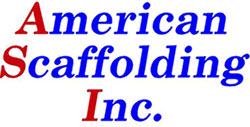Some movies can be hard to watch, and at the same time, impossible not to watch.
Free Solo, a film recently released by National Geographic, depicts the historic free climb of El Capitan in Yosemite National Park by expert climber, Alex Honnold. That’s “free climb”. As in without ropes or any other safety equipment.
When you’re in the scaffolding business, working in any way with or around scaffolding, it’s easy to feel torn between several reactions to Free Solo. These range from “Is the guy NUTS?!?!” to “The guy’s an outright mountain goat and hero!”. Whatever your reaction in this range, or beyond, one thing is for sure: do NOT attempt anything like it on the job!
Free Solo may be a movie of fabulous views and epic athleticism. It’s also an excellent reminder of how dangerous it is to work suspended above the ground. The hard facts are equally hard as reminders.
The U.S. Department of Labor reports that a mind-boggling 2.3 million construction workers work on scaffolds. Additional astounding data from the Department of Labor, regarding scaffolding-related accidents:
- Each year, on average 4,500 injuries occur.
- An average of 60 deaths are caused.
- S. employers spend $90 million in workdays lost.
Many solutions exist to reducing scaffolding related injuries. One of the first is quality safety equipment.
1. Invest in Quality Safety Equipment
Safety is something we take very seriously at American Scaffolding. In reality, safety is a strategic initiative that determines success in every area of our business. When it comes to safety equipment, we’re committed to protecting our workers and others through all phases of a job.
In fact, we’ve recently completed an initiative at American Scaffolding to upgrade all the safety equipment our crews use. The upgrade includes moving from standard, basic harnesses to ones featuring leading edge dual leg retractables.
Hard hats, glasses and gloves are a part of this effort as well, with upgrades across the line.
2. Expand Your “Safety Portfolio”
Beyond the personal safety equipment, we’ve also invested in our “safety portfolio” by way of new horizontal life lines, anchors, flag line systems, and guard rail systems. Along with equipment we are in the processing of updating safety documentation. These include daily, JHA’s, scaffold inspection, and more detailed scaffold tagging.
Safety itself is the key objective of the new equipment, but another goal has been to force and emphasize the issue. The new equipment is very tangible evidence of how seriously we regard our workers’ safety. In addition, we hope the commitment to upgrading safety equipment provides peace of mind. Using top-of-the-line gear can be reassuring to not only our workers, but their families. It also reassures our customers that safety comes first, ahead of everything else we do.
I’m sure I don’t have to tell you how important safety is to your business. If you are anything like us at American Scaffolding, safety is the first thing on your mind ALL the time.
3. Stay Up to Date with Safety Best Practices
We don’t presume to have all the expertise; in fact, we engage a third party safety consultant to guide us on best practices for safety at American Scaffolding. Still we invite you to take advantages of some of the safety resources we share on our website. In this section of our site, you’ll find an assortment of safety references and checklists, provided by experts including the Scaffolding, Shoring & Forming Institute (SSFI) and the Scaffold & Access Industry Association, Inc. (SAIA).
As for Free Solo – sure, check out the movie if you are interested. Other than that, we strongly advise against it!







